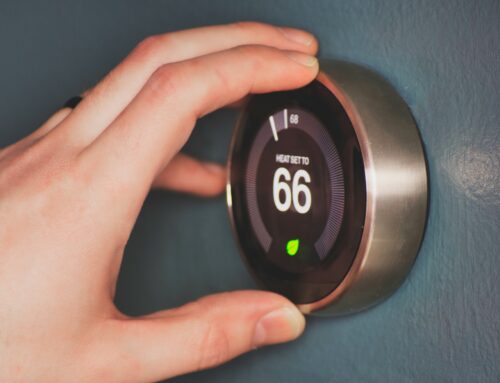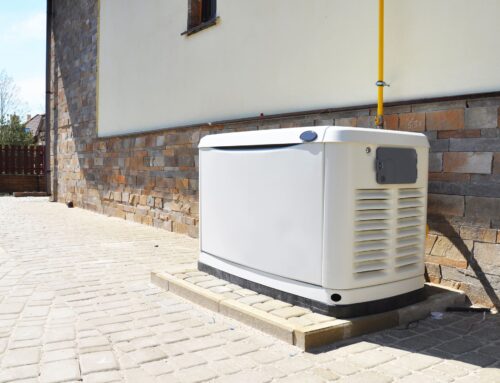Did you know that the pollution from indoor sources can make the air inside your home up to five times more polluted than the air outside? Understanding the importance of indoor air quality (IAQ), which includes natural ventilation, pollution, relative humidity, and human exposure, is crucial as it directly impacts our health and well-being. Poor IAQ can lead to respiratory problems, allergies, and even increase the risk of chronic diseases due to long-term exposure to indoor pollutants and air pollution. Taking steps to improve IAQ and address indoor air pollution and air quality problems is essential for creating a comfortable and healthy living environment. In this post, we’ll delve into the significance of IAQ, its health implications, air quality problems, air pollution, outdoor air, and ways to maintain a clean and healthy indoor atmosphere.
Understanding IAQ
Defining IAQ
IAQ, or indoor air quality, refers to the overall quality of the air inside buildings and other structures, including pollution, health effects, and homes. It encompasses various factors such as the presence of pollutants, temperature, humidity levels, ventilation, indoor air pollution, outdoor air, and biological contaminants. Maintaining good IAQ is crucial for ensuring a safe and comfortable indoor environment for occupants, as air pollution can have negative health effects.
Poor IAQ can lead to a range of health issues, including respiratory conditions like asthma and bronchitis. It can cause discomfort such as headaches, fatigue, and irritation of the eyes, nose, and throat. Furthermore, long-term exposure to indoor pollutants like pollution and pesticides has been linked to more serious health concerns like lung cancer and heart disease.
Health Impact
The effects of indoor air pollution on human health is substantial. For example:
-
Respiratory conditions like asthma can be worsened by poor air quality, which can cause health effects.
-
Headaches are a common symptom experienced due to exposure to indoor pollutants, which can cause health effects.
-
Long-term exposure to indoor pollutants, including pesticides, has been associated with health effects such as an increased risk of developing lung cancer and heart disease.
Climate Influence
Climate plays a significant role in determining indoor air quality and health effects in homes. Extreme temperatures and humidity levels can influence the concentration of pollutants indoors. Therefore proper climate control systems are essential for maintaining good IAQ and reducing indoor air pollution, health effects, and water in homes.
Common IAQ Pollutants
Types of Pollutants
Indoor air quality (IAQ) can be affected by various pollutants, including volatile organic compounds (VOCs), mold spores, dust mites, pet dander, and tobacco smoke./// These pollutants, which can have health effects, are often sourced from everyday items like cleaning products, building materials, and furniture. For instance, VOCs can be emitted by paints, varnishes, cleaning supplies, pesticides, and other sources. Understanding pesticides, water, and health effects is essential because it helps in pinpointing their origins and finding effective solutions to combat them.
Chemicals present in household cleaning products or released from building materials or pesticides can significantly contribute to poor IAQ. When discussing VOCs, mold spores, and pesticides as common indoor pollutants, it’s crucial to remember that they may not always be visible but can still have a detrimental impact on health.
Sources in Homes
Several factors within homes, including water and children, contribute to the presence of indoor pollutants that affect IAQ. Cooking emissions, inadequate ventilation systems, smoking indoors, various household products, and effects all play a role in compromising the air quality inside homes. Building materials such as asbestos-containing items or formaldehyde-based products also release harmful substances into the air, water, and homes.
Identifying these sources and their effects is key when aiming to improve IAQ within homes since addressing the root causes allows for more targeted solutions. For example: implementing proper ventilation systems or using air purifiers specifically designed to eliminate pet dander could help reduce the impact of these common sources of indoor pollution in homes.
Health Effects Overview
Respiratory Concerns
Poor indoor air quality (IAQ) in homes can trigger or worsen respiratory concerns, such as asthma and allergies. Common allergens found indoors in homes include dust, pollen, pet dander, and mold spores. Implementing measures to reduce triggers in homes can significantly improve respiratory health. For instance, using high-efficiency particulate air (HEPA) filters in HVAC systems in homes can help trap airborne particles like dust and pollen.
Maintaining proper ventilation in homes by regularly changing air filters and ensuring adequate airflow throughout is crucial for reducing the concentration of indoor pollutants that exacerbate respiratory conditions.
-
Dust
-
Pollen
-
Pet dander
-
Mold spores
Cardiovascular Risks
Indoor air pollutants pose detrimental effects on cardiovascular health. Fine particulate matter (PM2.5) and volatile organic compounds (VOCs) from homes have been linked to an increased risk of heart disease and stroke. To mitigate these risks, it’s essential to use low-VOC products when painting or renovating homes and to invest in an air purifier with a HEPA filter to remove fine particles from the indoor environment.
Proper ventilation in homes also plays a critical role in minimizing exposure to VOCs emitted from household cleaning products or building materials.
-
Fine particulate matter (PM2.5)
-
Volatile organic compounds (VOCs)
Cognitive Outcomes
Studies suggest that poor IAQ in homes can negatively impact cognitive function and productivity due to high levels of carbon dioxide (CO2) and other pollutants impairing cognitive abilities, attention span, and decision-making skills.
To address this issue effectively, educational institutions, workplaces, and homes should prioritize good IAQ through regular maintenance of heating/cooling systems while workplaces should consider implementing green spaces with plants known for their ability to naturally purify indoor air.
Long-Term Health Implications
Chronic Conditions
Long-term exposure to indoor pollutants in homes can lead to chronic conditions like respiratory diseases, cardiovascular problems, and even cancer. For instance, inhaling air contaminated with mold spores in homes over a prolonged period could result in respiratory issues such as asthma or bronchitis. Similarly, continuous exposure to volatile organic compounds (VOCs) from household products at home may increase the risk of developing certain types of cancer. Improving home IAQ is crucial in reducing the likelihood of developing these chronic health conditions.
Furthermore, poor indoor air quality at home can exacerbate existing health problems. Individuals with pre-existing conditions such as asthma or heart disease at home are particularly vulnerable. For example, someone with asthma might experience more frequent and severe attacks if exposed to indoor allergens like dust mites or pet dander at home. Therefore, enhancing home IAQ not only helps prevent the onset of new health issues but also supports those already managing chronic conditions.
Vulnerable Populations
Certain groups, including children, the elderly, and individuals with pre-existing health concerns, are more susceptible to the adverse effects of poor IAQ in home. Children’s immune systems are still developing at home, making them more sensitive to environmental factors than adults. Moreover, older adults often have weakened immune systems and may already be dealing with age-related health challenges at home.
Implementing measures to improve indoor air quality at home is especially critical for these vulnerable populations since they spend a significant amount of time indoors. By ensuring cleaner air at home or in childcare facilities and nursing homes where these groups reside or spend substantial time can significantly contribute to their overall well-being.
Identifying IAQ Issues
Recognizing Signs
Recognizing signs of poor indoor air quality and health in the home is crucial for maintaining a healthy living environment. Symptoms such as coughing, sneezing, headaches, fatigue, difficulty breathing at home can indicate compromised air quality. Unpleasant odors or visible mold growth in a home are clear indicators of potential IAQ problems. By being mindful of these signs at home, individuals can identify issues early on and take necessary steps to address them.
Regularly experiencing symptoms like coughing or fatigue could be a sign that the home’s indoor air quality is not optimal. For example, if someone constantly feels unwell at home but experiences relief when they leave the house for an extended period, it may be due to poor indoor air quality. Similarly, musty or unpleasant odors in specific areas of the home might signal mold growth or other pollutants affecting the air quality.
Testing Methods
Various testing methods are available to assess home IAQ problems effectively. These methods include air sampling to analyze airborne contaminants in home, measuring carbon dioxide levels to determine ventilation efficiency in home, monitoring humidity levels for mold prevention in home, and identifying specific pollutants through specialized testing equipment. Regularly conducting these tests allows homeowners and building managers to pinpoint problem areas accurately and implement appropriate solutions promptly.
For instance, if there’s suspicion of high levels of radon gas indoors in a home (a common IAQ issue), specialized tests can confirm its presence so that mitigation measures can be taken immediately. Similarly, by regularly monitoring humidity levels in basements or bathrooms in home where mold growth is common due to increased moisture content in the air helps prevent potential health hazards associated with mold exposure.
Improving Air Quality
Ventilation Strategies
Proper home ventilation is crucial for maintaining good indoor air quality (IAQ). Natural ventilation through windows and doors, as well as mechanical ventilation systems in a home, can help remove pollutants and bring in fresh air. For example, opening windows in a home on opposite sides of a room allows for cross-ventilation, promoting the circulation of fresh outdoor air. Implementing effective ventilation strategies improves the overall air quality indoors at home by reducing the concentration of indoor air pollutants.
Moreover, mechanical ventilation systems in home such as exhaust fans in kitchens and bathrooms can effectively remove moisture and odors while bringing in fresh outdoor air to replace stale indoor air. This process helps prevent the buildup of mold and mildew, which are common contributors to poor IAQ.
Purification Solutions
In addition to proper ventilation, employing purification solutions plays a significant role in enhancing IAQ. Air purifiers equipped with High Efficiency Particulate Air (HEPA) filters are highly efficient at removing airborne particles like dust, pollen, pet dander, and other allergens from indoor spaces. Furthermore, activated carbon filters integrated into these purifiers can effectively eliminate odors and volatile organic compounds (VOCs) present in the indoor environment.
For instance, placing an air purifier with HEPA filter technology in a bedroom can significantly reduce exposure to airborne allergens that may lead to respiratory issues or allergies. Choosing the right purification solutions actively eliminates harmful substances from the indoor atmosphere, contributing to better IAQ.
Factors Affecting IAQ
Lifestyle Factors
Lifestyle choices can have a significant impact on indoor air quality (IAQ). For instance, smoking indoors releases harmful chemicals and particles into the air, deteriorating IAQ. Similarly, certain cleaning products emit volatile organic compounds (VOCs), which can be detrimental to respiratory health. Even keeping pets indoors can contribute to poor IAQ due to pet dander and fur.
Adopting healthier habits is crucial for improving IAQ. Smoking outdoors instead of indoors prevents the release of harmful substances inside the house. Using eco-friendly cleaning products that are low in VOCs helps reduce indoor air pollution. Regularly grooming pets and vacuuming their fur minimizes the presence of allergens in the air.
Being mindful of these lifestyle factors promotes a healthier indoor environment overall. By making conscious choices about activities like smoking, cleaning, and pet care, individuals can significantly enhance their living space’s air quality.
-
Pros:
-
Adopting healthier habits improves overall well-being.
-
Reducing exposure to harmful substances benefits respiratory health.
-
Cons:
-
Changing established habits may require effort and discipline.
-
Eco-friendly alternatives might be more expensive initially.
Building Materials
The choice of building materials plays a crucial role in determining IAQ within a space. Certain materials used in furniture or construction can release toxic substances such as formaldehyde into the air over time, compromising indoor air quality.
Opting for low-emission materials is essential for maintaining good IAQ. Choosing formaldehyde-free furniture and low-VOC paints reduces the emission of harmful substances into the surrounding environment. Using sustainable and environmentally friendly building materials contributes not only to better IAQ, but also to overall environmental conservation efforts.
NIEHS and IAQ Research
Scientific Studies
Numerous scientific studies have emphasized the critical link between indoor air quality (IAQ) and human health. For instance, research has shown that exposure to indoor pollutants such as volatile organic compounds (VOCs) can lead to respiratory issues, headaches, and fatigue. These studies provide valuable insights into how different pollutants affect various health outcomes. Understanding this information is crucial for individuals and communities aiming to create healthier indoor environments.
Staying informed about scientific research helps in comprehending the significance of maintaining good IAQ. For example, a study conducted by the National Institute of Environmental Health Sciences (NIEHS) revealed that exposure to indoor air pollution can exacerbate existing respiratory conditions like asthma, especially in children. This knowledge empowers individuals to take proactive measures to improve IAQ within their homes or workplaces.
Community Initiatives
Communities play a vital role in promoting good IAQ through collaborative efforts such as educational campaigns, policy advocacy, and resource sharing. By engaging in community initiatives focused on improving IAQ, individuals can contribute to creating awareness about the impact of poor indoor air quality on health outcomes.
For instance, community-led programs can educate residents about simple steps they can take to reduce indoor air pollutants at home or workspaces. These initiatives may involve advocating for policies that promote cleaner indoor environments or sharing resources such as information on using air purifiers or implementing proper ventilation systems.
Global IAQ Concerns
WHO Guidelines
The World Health Organization (WHO) provides crucial guidelines for maintaining good indoor air quality (IAQ). By following these recommendations, people can ensure a safe and healthy indoor environment. Adhering to the WHO’s guidelines contributes significantly to better overall well-being. For example, simple measures like proper ventilation and reducing exposure to pollutants can make a substantial difference.
Implementing the WHO’s suggestions is vital because poor IAQ can lead to various health issues such as respiratory problems, allergies, and even more severe conditions in the long run. Therefore, understanding and applying these guidelines are essential for safeguarding personal health and that of family members.
Climate Change Effects
Climate change has direct implications on IAQ due to increased outdoor air pollution, extreme weather events, and fluctuations in temperature and humidity levels. These factors can compromise the quality of indoor air. For instance, rising temperatures may lead to higher levels of ozone indoors which could exacerbate asthma symptoms.
Adapting to climate change is critical for maintaining good IAQ. This involves implementing appropriate measures such as using air purifiers or dehumidifiers when necessary. Understanding the connection between climate change and IAQ helps in developing effective strategies aimed at mitigating its adverse effects on indoor environments.
It’s Time To Take Action
You’ve now gained a comprehensive understanding of indoor air quality (IAQ) and its profound impact on your health. From recognizing common IAQ pollutants to understanding the long-term health implications, you’re equipped to identify and address potential IAQ issues in your surroundings. Improving air quality is not just about comfort; it’s about safeguarding your well-being for the future. By taking proactive steps to enhance IAQ, such as proper ventilation and minimizing pollutants, you can create a healthier indoor environment for yourself and your loved ones.
Now that you have the knowledge, it’s time to take action. Assess your indoor spaces, implement strategies to improve air quality, and stay informed about global IAQ concerns. Small changes can make a big difference in your health. Remember, the air you breathe matters more than you may realize.
Frequently Asked Questions
What are the common indoor air quality pollutants?
Common indoor air pollutants include volatile organic compounds (VOCs) from household products, tobacco smoke, mold spores, pet dander, and dust mites. These pollutants can lead to various health issues when inhaled over time.
How can I improve indoor air quality at home?
Improving IAQ at home involves regular cleaning and vacuuming, using HEPA filters in HVAC systems, proper ventilation, reducing use of chemical-based products, and maintaining optimal humidity levels. These steps help minimize the presence of indoor air pollutants.
What are the long-term health implications of poor indoor air quality?
Prolonged exposure to poor IAQ can lead to respiratory diseases like asthma and allergies. It may also contribute to cardiovascular issues and other chronic health conditions. Improving IAQ is crucial for preventing long-term health effects.
What factors affect indoor air quality?
Factors affecting IAQ include building materials, ventilation systems, outdoor pollution sources, temperature fluctuations, moisture levels leading to mold growth, and human activities such as cooking or smoking indoors.
Why is NIEHS involved in research on indoor air quality?
The National Institute of Environmental Health Sciences (NIEHS) conducts research on IAQ due to its significant impact on public health. Understanding how environmental factors influence human health helps in developing strategies for improving overall well-being.





